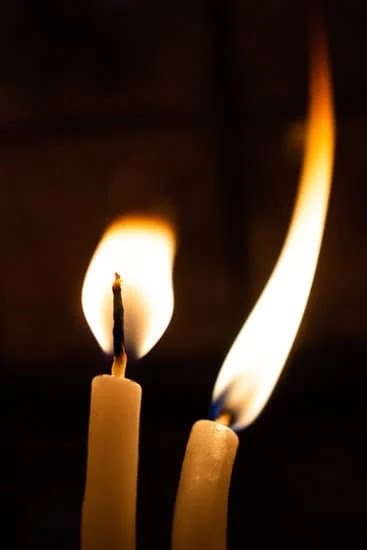Candle making is a fascinating and timeless craft that has evolved into a thriving industry. From its ancient origins to the modern-day market, the art of candle making has not only been a source of illumination but also a reflection of culture and innovation. In this article, we will delve into the world of candle making, exploring its history, the science behind it, market analysis, business opportunities, diversity within the industry, environmental impact, and future trends.
The candle making industry encompasses a wide variety of products and businesses, ranging from small-scale artisanal operations to large-scale manufacturing companies. Whether it’s traditional candles made from beeswax or contemporary scented candles crafted from soy wax, there is a diverse array of products that cater to different consumer preferences. Understanding the market dynamics and consumer behavior is crucial in determining what type of industry candle making represents.
As we embark on this exploration of candle making, we will uncover the rich history of this timeless craft, unravel the scientific aspects that make it possible, analyze its current market standing and future potential as a profitable industry. Join us as we illuminate the world of candle making and discover the artistry and business behind this ancient yet ever-evolving industry.
The History of Candle Making
Throughout the Middle Ages, candle making became a common trade in Europe, with chandlers (candle makers) producing candles for households, churches, and businesses. Tallow candles remained the most popular choice due to their affordability, while beeswax candles were favored by the wealthy for their pleasant aroma and cleaner burn.
The Industrial Revolution marked a significant turning point in the history of candle making as paraffin wax was introduced. This innovation revolutionized the industry by providing a cheaper alternative to traditional waxes and allowing for mass production.
In modern times, the art of candle making has experienced a resurgence in popularity as people seek out unique, handcrafted items. The industry has also adapted to embrace environmentally friendly practices and sustainable materials. With an emphasis on artisanal craftsmanship and natural ingredients, consumers have become more conscious about the products they purchase. This shift in consumer behavior has led to a growing market for premium quality candles that are both aesthetically pleasing and eco-friendly.
The Science Behind Candle Making
The candle making industry is a unique and diverse sector that encompasses various types of businesses and artisans. From small-scale hobbyists to large corporate manufacturers, the industry offers a wide range of opportunities for entrepreneurs and crafters alike. In terms of market analysis, the candle making industry can be classified as part of the home fragrance market, which also includes products such as reed diffusers, room sprays, and potpourri.
According to a report by Grand View Research, the global home fragrance market size was valued at USD 6.30 billion in 2019 and is expected to grow at a compound annual growth rate (CAGR) of 4.4% from 2020 to 2027. This indicates a significant growth opportunity for those involved in the candle making industry, as consumer demand for scented candles continues to rise.
In addition to the home fragrance market, candles also fall under the broader umbrella of the home decor and giftware industries. With consumers increasingly seeking unique and personalized items for their homes or as gifts, there is growing potential for innovation and creativity within the candle making sector.
| Market | Value (In USD) |
|---|---|
| Global Home Fragrance Market (2019) | 30 billion |
| Expected CAGR (2020-2027) | 4% |
Market Analysis
The candle making industry is a diverse and dynamic market that has evolved over thousands of years. Today, it encompasses a wide range of products, from traditional wax candles to scented and decorative options. So what type of industry is candle making? Let’s take a closer look at the market analysis to understand the current landscape of this industry.
To begin with, the candle making industry falls under the broader category of home fragrance products. This includes air fresheners, reed diffusers, and other scented items. However, within this sector, candle making stands out as a unique and versatile industry that appeals to a wide range of consumers. Whether it’s for relaxation, decoration, or religious purposes, candles have found a place in households worldwide.
In terms of market trends, the demand for environmentally friendly and sustainable candles has been on the rise in recent years. Consumers are becoming more conscious of the impact their purchases have on the environment, leading to a growing interest in eco-friendly candle options. This shift has prompted many companies to explore alternative materials and production methods to meet this demand.
As we delve further into the market analysis of candle making, it’s important to note that technological advancements have also played a role in shaping this industry. Online platforms and social media have provided new opportunities for candle makers to reach wider audiences and connect with potential customers. Additionally, the rise of e-commerce has made it easier for smaller businesses to enter the market and compete alongside larger corporations.
- Market Trends:
- Growing demand for eco-friendly candles
- Increasing use of online platforms for sales
- Emergence of small businesses alongside larger corporations
The Business of Candle Making
One of the reasons why candle making has become such a profitable industry is due to the rising interest in all-natural, eco-friendly products. Consumers are becoming more conscious of the ingredients used in the products they purchase, leading to a preference for natural wax candles over synthetic ones. This shift in consumer behavior has created opportunities for businesses to cater to this demand and establish themselves as sustainable and environmentally-friendly brands in the candle making industry.
In addition to the demand for natural candles, the growing popularity of custom and luxury candles has also contributed to the business potential of candle making. From personalized wedding favors to artisanal scented candles, consumers are willing to invest in unique and premium products, opening up avenues for entrepreneurs to tap into niche markets within the industry.
As a result, what type of industry is candle making? It is one that offers diverse opportunities for businesses to thrive by offering specialized and high-end candle products.
Types of Candles
When it comes to the type of industry that candle making falls under, it is important to consider the wide range of candles available in the market. The diversity within the industry allows for different types of candles to cater to various preferences and needs.
Traditional Wax Candles
Traditional wax candles are some of the most common types found within the candle making industry. These are typically made from paraffin wax or soy wax and come in various shapes, sizes, and scents. They are popular for their versatility and affordability.
Beeswax Candles
Beeswax candles have gained popularity in recent years due to their natural origin and clean burning properties. These candles are often seen as a more sustainable and eco-friendly option compared to traditional wax candles.
Decorative Candles
The decorative candle market has seen significant growth, with consumers seeking unique and aesthetically pleasing options for home décor. These can include novelty-shaped candles, sculpted designs, or intricately carved creations that add a touch of artistry to any space.
Environmental Impact
Traditional candle making has long been associated with the use of paraffin wax, a petroleum by-product that emits harmful toxins into the air when burned. This has raised concerns about the environmental impact of the industry, especially in terms of air quality and carbon emissions. Additionally, the process of extracting and refining paraffin wax is not environmentally friendly, as it involves the consumption of non-renewable resources.
To address these environmental concerns, many candle makers are now turning to more sustainable and eco-friendly alternatives to paraffin wax. One such alternative is soy wax, which is derived from soybean oil and is biodegradable. Additionally, beeswax and coconut wax are also becoming popular choices due to their natural origins and minimal impact on the environment.
In addition to utilizing sustainable materials, candle makers are also taking steps to reduce their carbon footprint in other aspects of production. This includes implementing energy-efficient processes in manufacturing, utilizing recyclable packaging materials, and minimizing waste in their operations. By adopting these environmentally conscious practices, the candle making industry is evolving towards a more sustainable future.
The Future of Candle Making
In conclusion, the future of candle making is a bright one, filled with exciting trends and innovations that are set to revolutionize the industry. With a growing emphasis on sustainability and eco-friendly practices, the candle making industry is evolving to meet the demands of environmentally conscious consumers. This shift has led to the development of new materials and production methods that are not only better for the planet but also create unique, high-quality candles.
One major trend to watch out for in the future of candle making is personalized and customizable products. Consumers are increasingly seeking unique and customized items, including candles that reflect their individual tastes and preferences. This has led to an increase in demand for personalized scents, designs, and packaging options within the industry.
Another innovation to keep an eye on is the integration of technology into candle making. From smart diffusers to app-controlled scent customization, technology is playing a significant role in shaping the future of this industry. As digital advancements continue to enhance product development and consumer experience, it’s clear that technology will be a driving force behind future innovations in candle making.
As we look ahead to the future of candle making, one thing is certain: this industry will continue to thrive and adapt to changing consumer needs and preferences. Whether it’s through sustainable practices, personalization options, or technological advancements, the world of candle making is poised for exciting developments that will shape its trajectory for years to come.
The future holds endless possibilities for this timeless craft, ensuring that candle making remains a vibrant and essential part of today’s market landscape.
Frequently Asked Questions
How Concentrated Is the Candle Manufacturing Market in the United States?
The candle manufacturing market in the United States is quite concentrated, with a few major players dominating the industry. These companies hold a significant share of the market and have established themselves as leaders in the production and distribution of candles.
What Is the Market Size of the Candle Manufacturing Industry in the US?
The market size of the candle manufacturing industry in the US is substantial, with billions of dollars in annual revenue. Candles are a popular household item and are also widely used in various industries such as hospitality, healthcare, and retail, contributing to the industry’s overall market size.
What Industry Are Candles Considered?
Candles are considered part of both the consumer goods industry and the home fragrance industry. While they are commonly associated with retail consumer products, their use in creating ambiance and providing pleasant scents also places them within the home fragrance sector. As a result, candles straddle multiple segments within these larger industries.

Welcome to my candle making blog! In this blog, I will be sharing my tips and tricks for making candles. I will also be sharing some of my favorite recipes.





